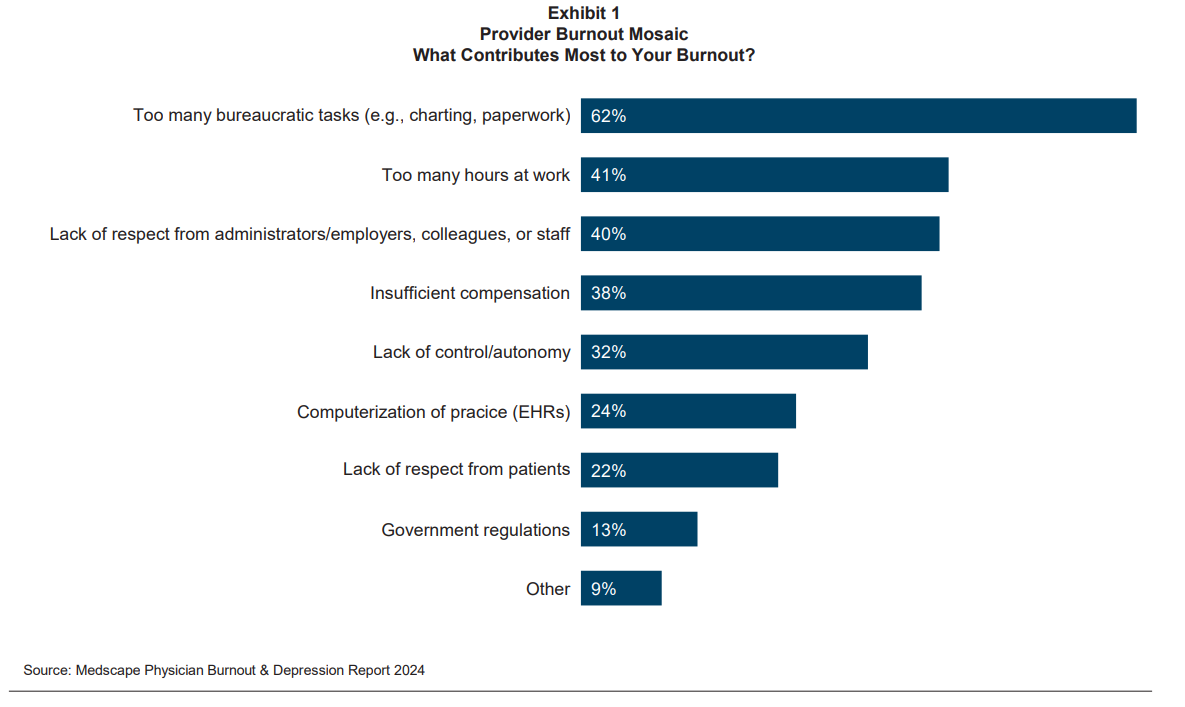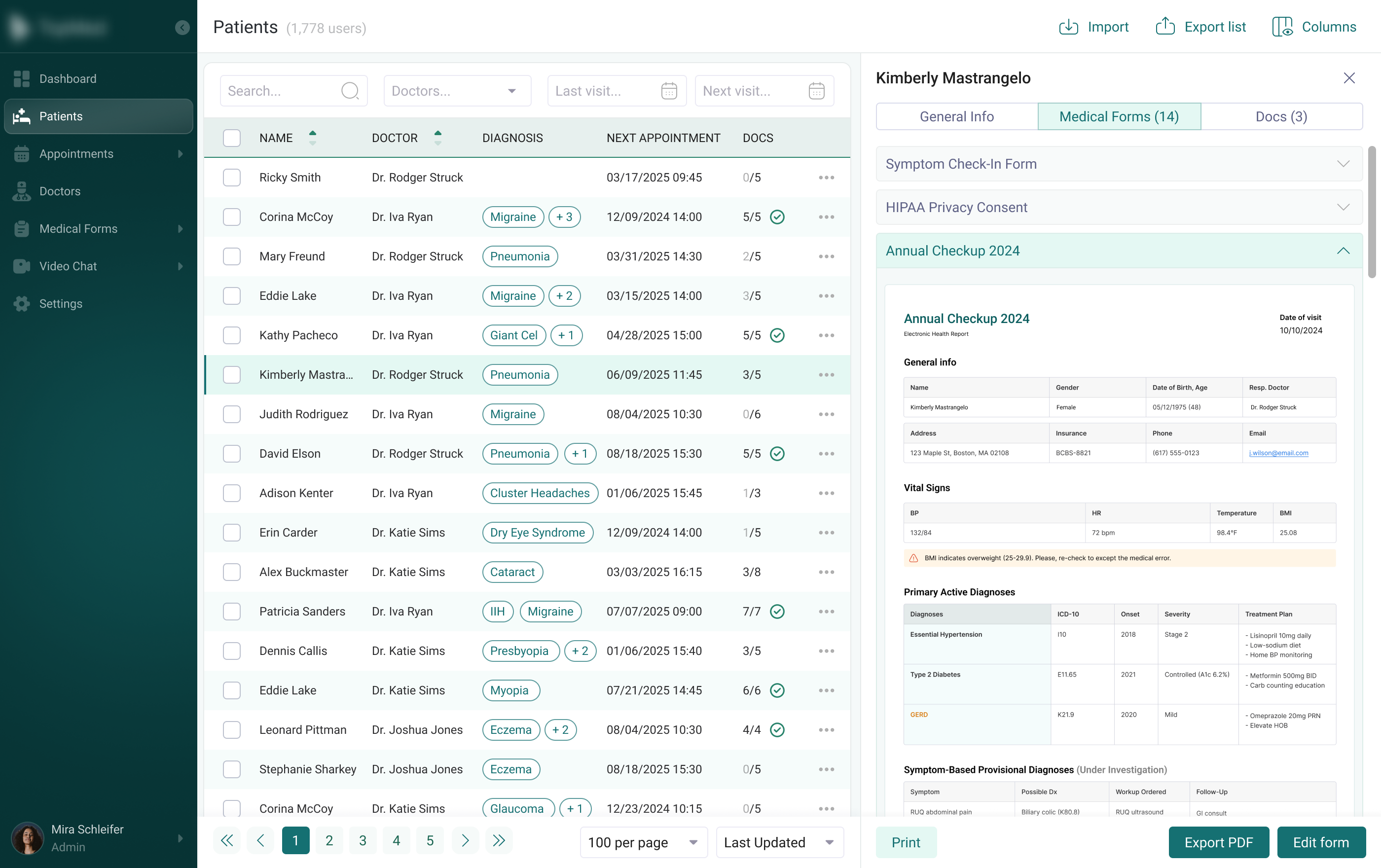Summary
The article explores how XB Software assisted healthcare IT companies in automating document management to alleviate the administrative burden on medical staff.
By integrating features like automated form processing, user management, scheduling modules, and telemedicine capabilities, the solutions enhanced workflow efficiency and reduced manual errors. These improvements allowed healthcare providers to focus more on patient care and less on paperwork.
As healthcare continues to advance at a rapid pace, IT companies are under pressure to deliver software that not only meets clinical needs but also simplifies the documentation burden on medical staff. From custom CRM systems to patient appointment management apps, efficient document handling is becoming a top priority for software vendors serving clinics and medical institutions.
As an IT outsourcing partner, we regularly support C-level executives at healthcare-focused IT companies who are navigating the challenges of building and optimizing such solutions. In this article, we will walk you through two real-life cases where we helped to improve document management features, ensuring their products delivered both performance and peace of mind to their end users.
The Challenge: Managing Standardized Medical Forms
Many IT companies specializing in healthcare solutions develop software that processes a large number of standardized forms, traditionally requiring manual data entry. This approach is time-consuming and prone to errors, particularly when input data does not match preset templates. According to the William Blair report, Medscape surveyed more than 9,200 physicians across nearly 30 medical specialties, with 62% of respondents citing an overload of manual bureaucratic tasks.

A common misconception is that digitalizing this workflow requires redesigning each form from scratch, which is inefficient and labor-intensive. However, there are ways that IT companies can follow to enhance the web applications for their clients. For example:
- User Management – Secure access for healthcare staff and patients can be implemented;
- Scheduling Module – Streamlined appointment booking enhances user experience;
- Patient Visit History – Integrating comprehensive medical records can do the trick;
- Zoom Integration – Telemedicine capabilities are now widely used;
- Admin Panel – It is almost impossible for healthcare institutions to work without inventory management, staff schedules, procedures, and prescriptions;
- Document Management – Automated handling of healthcare documentation is a must.
In this article, we decided to take a deep dive into the solutions we offered for our clients regarding the document management in order to help end-users to deal with the issue of managing medical forms. Let’s look at what we offered to modernize healthcare management software.
Case Study 1: Enhancing PDF Medical Record Forms Management with PDF.js Express and At.js
Our client, an IT company developing a custom CRM system for the U.S.-based clinic with focus on traditional Asian medicine, needed to enhance their solution with efficient document management capabilities. The clinic’s CRM system had to comply with municipal regulations, which required completing standardized PDF medical forms. Traditionally, physicians manually filled out these forms, selecting required procedures and diagnoses from a dynamic tree structure.
Our Role:
The client approached us with a need to improve their document management module without overhauling the entire system. We should have assisted them dealing with the issue of medical staff having to manually fill out standardized PDF forms. This tedious and error-prone process was slowing down day-to-day operations.

Usually, in similar applications, due to the integration of such forms with the existing healthcare management systems and databases, it is possible to automate the process of filling out documents. This eliminates the need for manual entry in favor of pre-filling the medical record form with certain values and then laying out the page in HTML format, which will be generated in PDF at the next step. However, this solution adds several intermediate steps to the chain of actions.
In the medical industry, where employees work with a huge amount of information related to patients, insurance claims, and clinical trials on a daily basis, the variability in the information entered is not just enormous, but rather gigantic, as there is the possibility of error in manual data entry at different stages. The goal was to simplify form completion while reducing administrative burdens for medical staff between the different chains of the healthcare industry.
Streamlining Medical Documentation with PDF Integration
To simplify this process, we offered to integrate PDF.js Express, a powerful library that enables direct interaction with PDF documents within a web browser. Unlike traditional solutions that require converting PDFs to HTML or relying on third-party services, PDF.js Express preserves the original document format. This would allow healthcare professionals using the clinic’s CRM software to:
- Fill out forms directly in the web app without converting files;
- Edit text, add annotations, comments, and notes in medical documentation to collaborate in real time;
- Electronically sign documents to ensure regulatory compliance and enhance data security.
| Before | After |
| Previously, developers had to create unique HTML pages for required fields and then generate them as PDFs — a time-consuming process leading to documentation inconsistencies. | Now, they can upload a PDF template, define its application area, and allow users to enter data directly in the interface without altering the document structure. |
Read Also Building the Future of Healthcare: Patient Management Software and Its Essential Features
Enhancing Speed and Accuracy with At.js

To further accelerate form-filling and reduce errors, our team integrated At.js, a lightweight library that enables auto-completion based on predefined dictionaries or user input.
This enhancement allowed:
- Auto-suggestions for patient names, diagnoses, or medications, reducing manual input and eliminating typos;
- Context-aware fields, ensuring that only medical conditions appear in diagnosis fields and only medications appear in prescription fields;
- Pre-set templates and standardized diagnoses, allowing physicians to quickly complete reports while maintaining structure and accuracy.
Case Study 2: Easy Speech Conversion into Digital Clinical Notes with AI Transcription and Zoom Integration
An IT company working on an app to help clinics manage appointments was struggling to offer a suitable solution for the end-users that will let them deal with the pre-visit consultations and associated medical documents. The client wanted to hire our specialists to help them with the solution. Due to the outstaffing model and loss of old documentation, initial project context was limited. However, the client needed a robust way to support digital consultations and automate clinical note-taking.
Our Role:
We were tasked with implementing a speech-to-text feature that could transcribe medical conversations between doctors and patients in real time and structure them into usable clinical data.
The AI medical transcription feature can not only make virtual consultations more productive, but it also improves record-keeping quality. It helps doctors to focus on their patients, while the system captures essential details automatically — no more toggling between care and keyboards. So, let’s see what we offered for our client.
AI-Powered Medical Transcription and Smart Clinical Notes
Some medical services, such as pre-visit consultations, can be definitely effectively conducted via live video calls between doctors and patients. To ensure a smooth experience within the appointment application, our team focused on two key features.
First, we integrated Zoom SDK to facilitate video consultations with a familiar and user-friendly interface. Instead of overcomplicating the process, we leveraged Zoom’s well-documented iFrame integration, making it easy to assign participants through the existing user management module.
Second, to enhance workflow efficiency and streamline record-keeping, we implemented AI-driven real-time transcription for doctor-patient conversations. This feature automatically captures and structures dialogue during consultations, identifying key medical information based on predefined trigger phrases. By integrating ChatGPT API, the system intelligently detects symptoms, conditions, and treatment recommendations mentioned during the discussion.
With natural language processing (NLP), the system then transcribes conversations in real time, converting speech into structured clinical notes. Medically relevant terms, such as diagnoses, prescriptions, and follow-up instructions, are automatically highlighted and organized into a searchable, timestamped patient record. This ensures that physicians can quickly retrieve critical details while maintaining accuracy in medical documentation.
Thus, this integration resulted in:
- Reduced manual note-taking – Doctors no longer need to split attention between patient care and documentation. The AI handles transcription, allowing physicians to focus entirely on the consultation;
- Improved documentation accuracy – Eliminates human errors in note-taking by capturing exact terminology and contextual details, ensuring compliance and clarity in medical records;
- Streamlined record-keeping – Automatically categorizes notes by topic (e.g., symptoms, treatment plans), making it easier to review past consultations and track patient history;
- Enhanced patient engagement – Summaries can be shared with patients post-visit, improving transparency and adherence to treatment plans.
This process now ensures that no critical detail is missed during pre-visit consultations, while significantly reducing the cognitive load on healthcare providers. By automating medical documentation, it became possible to save time, reduce errors, and enhance patient care, all while allowing doctors to focus on what truly matters: their patients.
Read Also These 7 Healthcare Systems Can Bring Your Business Luck and Prosperity
Future Trends in Automating Healthcare Workflows
Beyond the solutions implemented in these cases, emerging technologies continue to push automation in healthcare software forward. Advances such as artificial intelligence and machine learning are revolutionizing diagnostic tools, making them faster and more accurate. Similarly, wearable devices integrated with healthcare systems are streamlining patient monitoring and data collection, further enhancing efficiency. For example, IT companies can integrate:
- AI-Powered Data Extraction – Optical Character Recognition (OCR) and Natural Language Processing (NLP) can extract structured data from scanned documents and handwritten notes, reducing manual workload.
- Blockchain for Medical Records – Secure, decentralized storage of patient records ensures data integrity and prevents unauthorized modifications.
- Robotic Process Automation (RPA) – Automates repetitive administrative tasks such as patient intake, insurance verification, and claims processing.
- FHIR and HL7 Integration – Standardized data exchange frameworks improve interoperability across different healthcare systems.
- IoT in Healthcare – Smart devices and wearables can collect real-time patient data, feeding directly into healthcare management systems for improved monitoring and decision-making.
- Cloud-Based Healthcare Platforms – Allow seamless access to medical records across different facilities, enabling better coordination between healthcare providers and IT teams.
- Automated Compliance Checks – AI-driven systems can ensure that healthcare documentation meets regulatory standards, reducing legal risks and improving audit readiness.
Automation Isn’t the Future — It’s the Standard
As healthcare digitalization accelerates, IT companies must equip their software with advanced automation capabilities to meet evolving industry demands. By leveraging direct PDF interactions, intelligent auto-completion, and emerging technologies, it is possible to empower software providers to deliver innovative, compliant, and highly efficient healthcare solutions for their clients.
If your company develops or modernizes healthcare management software and needs cutting-edge automation tools, contact us today, and we will help you to build the future of medical documentation!